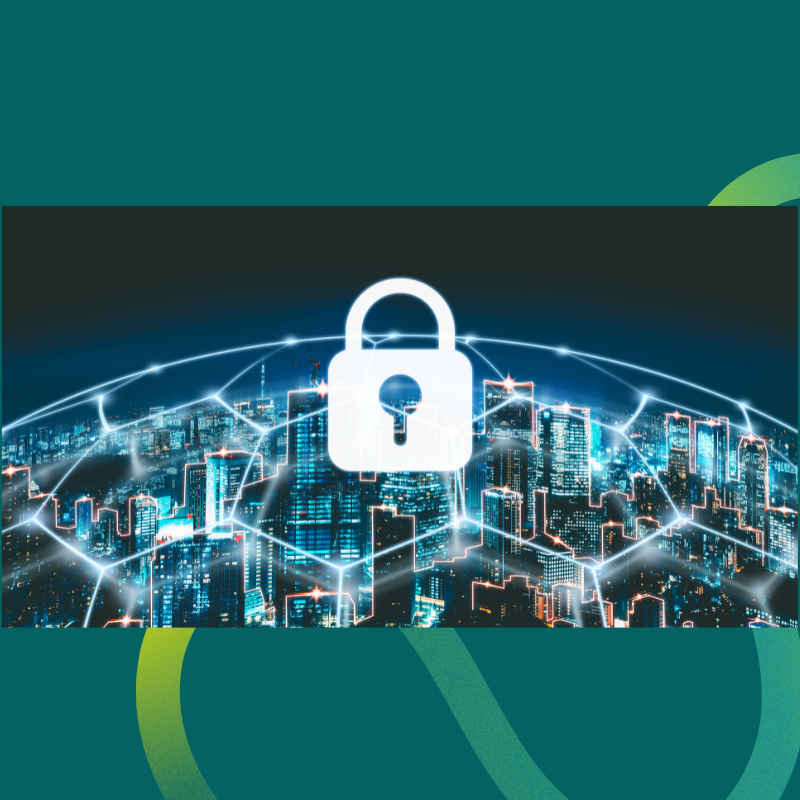
Data Security
You hear about them every day – cyberattacks. Recently the news has been reporting on the latest attack to the Seattle-Tacoma International Airport, causing flight delays, baggage problems, and spreading through the Port of Seattle’s operations. Not only did the attack cripple the airport’s operations for nearly a week, but it even forced airport employees to use handwritten notes to track baggage for customers.
As you can see from this one incident, your data is literally the lifeblood of your company’s success, which is why it is imperative that it is protected from both internal and external corruption or theft. Investing in a reliable data security system is vital to the health of your organization, yet so many companies implement data security after an attack.
This is why this month’s blog is so important – not only will we discuss what data security is and the most common potential threats, but also five types of data security processes you can put into effect right now.
What is Data Security?
Data security is just like it sounds – it is the process of protecting your business’s data from any type of unauthorized access. Although the media has focused on certain organizational breaches, such as financial services, healthcare, airlines, and retail companies, all businesses should have a data security system in place.
At Critical Connexion, we understand that your data security system should cover everything that holds your data, including the hardware, software, and storage devices (both on site and in the “cloud”). That way, your data is safe from anyone who is looking to steal or corrupt your data from inside or outside your facility.
You may think that a data breach will “just” put the information of your company (and possibly your employees) in jeopardy. However, there are other reasons data security is important. Companies that have been hit with cyberattacks and data breaches have incurred financial loss, operational downtime, state or federal regulatory fines, reputation damage, and even legal issues due to inadequate data security.
From encryption and data masking to data erasure and resiliency, we’ll give you some useful examples of how to protect your data against data breaches, theft, and cyberattacks.
Types of Data Security
Implementing a data security system can be confusing and the type you use really depends on many factors – the size of your organization, whether you use the cloud to store data, and how long you need to keep data available. However, below are five data security types you can use to protect your data today:
- Encryption: You can use algorithms to scramble or conceal every data character so that it just looks like random data to a potential thief. Only authorized individuals with a decryption key can see the true meaning of the data; without this decryption key, the data is useless.
- Data masking: This is a form of encryption that hides or conceals your company’s sensitive data so that it is unreadable to unauthorized individuals by replacing letters or numbers so that, if stolen, the information is useless to the hacker. That way, only authorized individuals who have the specific code or are using the data masking software can decrypt the original information.
- Data erasure: You may have heard that nothing can be permanently deleted on the Internet, but this is not true when it comes to data security. Data erasure will ensure that the data you no longer need is permanently removed from your system by overwriting it on your service. That way, your company isn’t liable for old data in the case of a data breach or cyber-attack.
- Data resiliency: On the opposite end of erasure, you may need to create backup copies of data and information in case it is stolen, accidentally deleted, or damaged. This option is crucial to protecting your company’s information if a cyberattack occurs because you will want to be able to quickly recover your information and restore it through a data backup plan.
- Authentication: Many companies are requiring their employees to use a two-factor authentication process to confirm and validate their login credentials. This usually includes having to put a code into your phone after logging into the company’s system via a computer. That way, it can prevent unauthorized access from foreign locations by requiring codes, passwords, PINS, tokens, or other types of biometrics.
These are just five ways to protect your company’s data from threats. However, data security doesn’t end here; you will also want to train your employees so that they also understand the best practices of data security. Cybersecurity training programs that teach your employees the different types of attacks and impacts of data loss are vital to your organization’s safety. That way, they can also spot any potential threats, have a clear understanding of your company’s security policies and procedures, and help safeguard your data.
What Threats Are Out There Today?
There are numerous threats that can be thwarted with a data security system in place, and some of the most common threats you and your employees should be aware of include the following:
- Malware: This is a program or code that infiltrates your computer system with the sole intention of doing harm. Anything from viruses, spyware, trojans, and ransomware fall into this category. Ransomware, in particular, has been quite common in which the cyberattacker threatens to release all of your data unless you pay a ransom fee. The FBI, the Department of Defense Cyber Crime Center, and the Cybersecurity and Infrastructure Security Agency have been issuing advice against ransomware and recently exposed an Iran-based threat actor known as “Fox Kitten,” who has been using ransomware in the United States to commit cyberespionage since 2017.
- Social engineering: This is a very popular scheme that tricks employees into taking action through email, texting, or another form of communication so that the criminal can hack into the company’s computer network. Social engineering is so common that, according to Verizon’s Data Breach Investigations Report, nearly 70% of breaches are from social engineering. This is also why employee training is essential so that they can spot a fake email from a real one.
- Cloud data storage: So many companies are using the cloud to store data that it is a free-for-all for would-be attackers and criminals. Although working in the cloud is essential, controlling and protecting your data is much more difficult in this realm.
- Internal attacks: Sometimes a former (or current) employee with authorized access to an organization’s network will expose data for vengeance. Other times, an employee may accidentally expose data through simple negligence.
We have discussed just some of the threats and data security steps your organization can take to ensure your organization is protected. Your organization should use a wide range of data security safeguards; that way, you will be protected from accidental exposure, insider threats, or outside attacks.
About Critical Connexion:
Critical Connexion is a distinguished business management & consulting firm that focuses on leveraging a foundation of leading finance, HR management, strategic sourcing, risk & operations experts to accelerate brand success for clients.
We specialize in navigating the evolving landscape of corporate growth by adeptly addressing changing systems, process, and people requirements. Recognizing the substantial nature of technology and changing business needs, we ensure that these resources are directed with foresight and expertise. We are your extended partners for business growth, scaling seamlessly and brand elevation.
Contact Us:
Ph: 213-798-6676
Email: [email protected]















